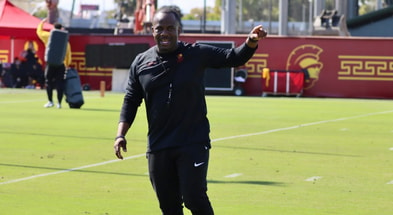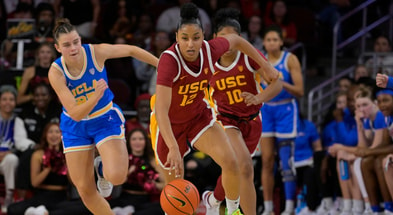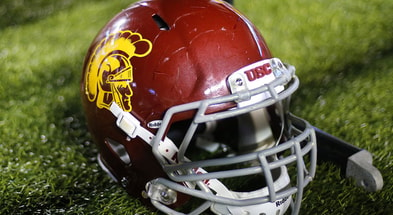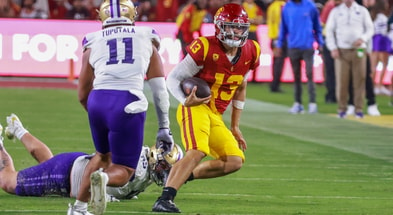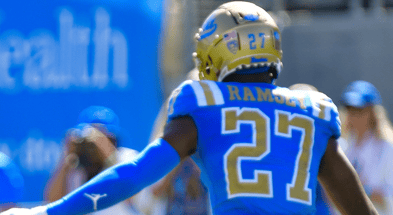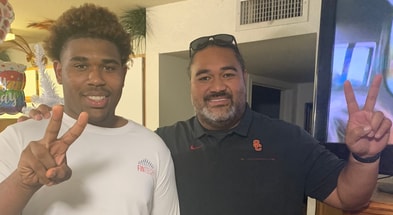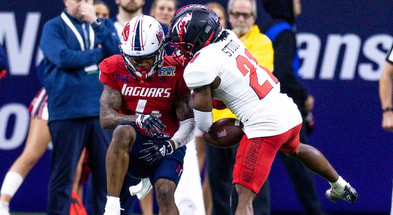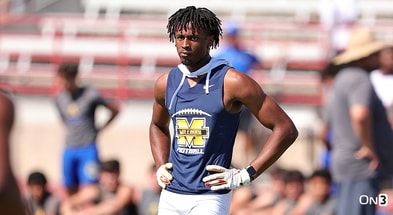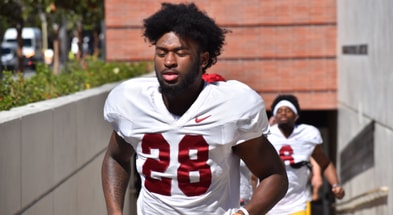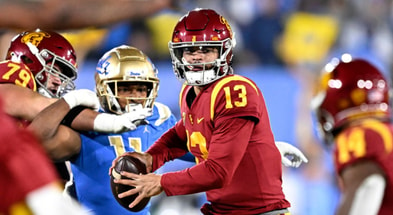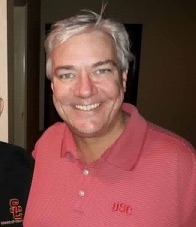Big Ten announces fall season; Can the Pac-12 follow?
The Big 10 conference announced its return-to-play plan this morning, as the conference will begin playing games on Oct. 24, with an 8-game, conference-only schedule followed by a plus-1 game that would pit the similarly-placed teams from the East and West against each other, including the first place team from the East against the first place team from the West to determine the conference champion. Now, can the Pac-12 follow, or will it remain the only Power 5 conference on the sidelines this fall?
Simply put, the Pac-12 cannot sit out this season while the other conferences play. The conference is already seen as the little brother in the Power 5 conversation and not having a season would likely have a major negative impact on recruiting and perception for several years.
But there are still some major hurdles the Pac-12 must clear in order to play this fall.
As of Sept. 30, every school in the conference will have access to 15-minute antigen testing machines, which should allow schools to hit the testing goals that conference medical advisors have set in their recommendations for a return to play. But how quickly can schools actually get those up and running, and producing verifiable results?
Arizona has had access to these tests since late-May, and while Dr. David T. Harris, executive director of the UA’s Health Sciences Biorepository has said he believes it is reliable, he also said it could take up to a month for schools to have testing capabilities running smoothly. With the announcement of the partnership taking place in early September, maybe there is a way for programs to get a head start on the protocols and infrastructure surrounding that process before the machines are in place? The Big Ten would certainly appear to think a plan could be put into place based on future results, as its daily testing is set to begin on Sept. 30, with the season beginning less than a month later.
But that’s only the tallest hurdle the Pac-12 needs to clear on the way to the next tallest hurdle. At this point, half of the conference teams–the four California programs and two Oregon programs–are unable to practice. In their letter to California Governor Gavin Newsom yesterday, USC football players specifically mentioned that they cannot “practice in groups larger than 12, [they] cannot gather as a team, and [they] cannot utilize any of [their] indoor facilities.”
Clearly, that’s a problem when it comes to getting ready for a season. This was the first public pressure a Pac-12 entity put on California’s leadership in order to have an exception granted that would allow student-athletes to participate in full practices on college campuses. Clearly, the state has granted exceptions for this exact thing, as three California professional football teams have begun their seasons. It will be interesting to see if any public pressure comes from any higher up than the letter from the football players, combined with social media approval and support from the coaches.
The Big 10 has been criticized for its approach to the 2020 football season, but Zachary Binney, epidemiologist and Assistant Professor of Quantitative Theory and Methods at Emory University, tweeted Tuesday, “A lot of you may not like it, and their communication has been lacking, but the Big Ten has behaved more or less how a responsible conference would proceed under the circumstances. No fans, postpone until you’re confident you get frequent rapid testing.
“My personal view is the myocarditis stuff got blown WAY out of proportion relative to what we know. The Big Ten’s actions are consistent with a conference that prioritizes not creating a big public health threat if they play.”
And ultimately, the Big Ten will have an opportunity to compete for a national championship this season.
Pac-12 Commissioner Larry Scott released a statement on Tuesday morning, following the Big Ten’s announcement:
“At this time, our universities in California and Oregon do not have approval from state or local public health officials to start contact practice. We are hopeful that our new daily testing capability can help satisfy public health official approvals in California and Oregon to begin contact practice and competition. We are equally closely monitoring the devastating fires and air quality in our region at this time. We are eager for our student-athletes to have the opportunity to play this season, as soon as it can be done safely and in accordance with public health authority approvals.”
Obviously the fires on the West Coast are an additional issue that other conferences aren’t dealign with and would likely affect practices right now for several schools anyway.
If you can be hopeful without being completely optimistic, that might be where the conference is now.
While individual school and conference communication with state and local governments becomes a central issue now, if the Pac-12 as a whole or its parts are going to push for exemptions that would allow full practices, the timing of everything now matters very much.
The idea of playing a fall season is to be in the conversation with other conferences for spots in the College Football Playoff. The Big Ten’s decision to begin games the weekend of Oct. 24 and schedule eight conference games has everything to do with finishing a season–with a conference champion–in time to be included in the CFP. If the Pac-12 is going to play an 8-game schedule and be finished by Dec. 20–the final day of the final meeting for the CFP committee–that Oct. 24 start date is mandatory. And, if schedules hold and Sept. 30 just begins the process of the conference’s testing protocols potentially resulting in exemptions for the California and Oregon programs to practice, that Oct. 24 start date seems completely undoable.
We’ve heard college coaches say they’d need six weeks to fully prepare for a season, with the thought that maybe it could be cut down to five. But three? That feels impossible, though players and coaches have said they’d try to make just about anything work if it means getting on the field for a season. Even if things hit warp speed and fall camp was able to begin this Saturday, programs would have just five weeks to prepare for an Oct. 24 game.
While it would be frustrating to begin a season in November with no chance of making the playoff–considering the CFP rankings and who will be the final four teams have become the driving narrative of college football in recent years–playing alone in January would be far more frustrating. Not only would the season not matter, but it would likely put the Pac-12 at a competitive disadvantage for the 2021 season as well.
A November 14 start date could be interesting, but its unlikely a 6-0 Pac-12 champion (wins against all five division opponents and in the Pac-12 championship game) would even be eligible for the playoffs. Although, who knows what might happen with potential postponements and cancellations in other conferences.
